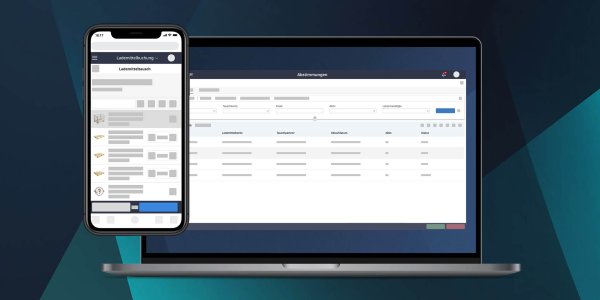With myleo / empties, we offer you a central cloud solution for controlling returnable load carriers and create transparency through definable loading equipment accounts within your supply chain network down to the smallest detail. Thanks to the system-supported recording and booking of incoming and outgoing loading equipment, as well as the automated management and reconciliation of loading equipment accounts, the module already enables a high degree of automation. However, the future of container management lies in a fully automated end-to-end mapping of processes. This can be achieved through the additional use of IoT technologies such as Bluetooth Low Energy (BLE) or RFID.
The automotive industry is already leading the way: By using tracking technologies such as BLE, end-to-end automated container flow and cycle-controlled delivery to production lines can be achieved. The location of load carriers is tracked seamlessly via Bluetooth from the loading of a route train to the journey to the individual waypoints to the destination location. A fill level sensor uses ultrasound to ensure that loading or unloading has taken place and that all full and empty containers have been placed in the correct storage areas. The sensor system automatically triggers a reorder if the fill level falls below a certain level. This creates end-to-end automation and transparency, and manual intervention is only required in the event of a malfunction.
Even cross-location container cycles within your supply chain can be fully automated through the use of RFID, for example. By equipping reusable containers with RFID technologies such as transponders, antennas, gates or complete solutions across the board, container movements can be analyzed fully automatically and processed autonomously.
We can easily connect your upstream system to the myleo / dsc via our connectivity service and integrate pre-planning of container entries and exits during registration at the loading ramp. During transport, the containers can be located and tracked by sensor, even during reloading at the hub. Once at the destination, it sends this information to the platform on its own, confirming that the plan has been executed accordingly - or conversely, that a mismatch between plan and execution has been detected. This enables full automation of container flows, and manual visual checks and corrections are a thing of the past.
The benefits of fully automated container management lie primarily in the reduction of costs and time spent, as manual process steps such as the recording of loading equipment in incoming or outgoing goods, visual inspections and reconciliation times for the formation of account balances are eliminated. In addition, transparency within the supply chain is increased for all parties involved, as the path of a loading device can be tracked in real time and availabilities and bottlenecks can be viewed immediately.
Through the additional use of IoT technologies and the supply chain network collaboration approach in our container management solution myleo / empties, you can map your container cycles completely transparently and in real time. Both the recording and booking of incoming and outgoing goods as well as the reconciliation of container accounts are simply fully automated. And best of all: On our cloud platform, all your supply chain partners can view the bookings, inventories and container locations and collaborate and communicate together.
Have we piqued your interest? Just get in touch with us!
